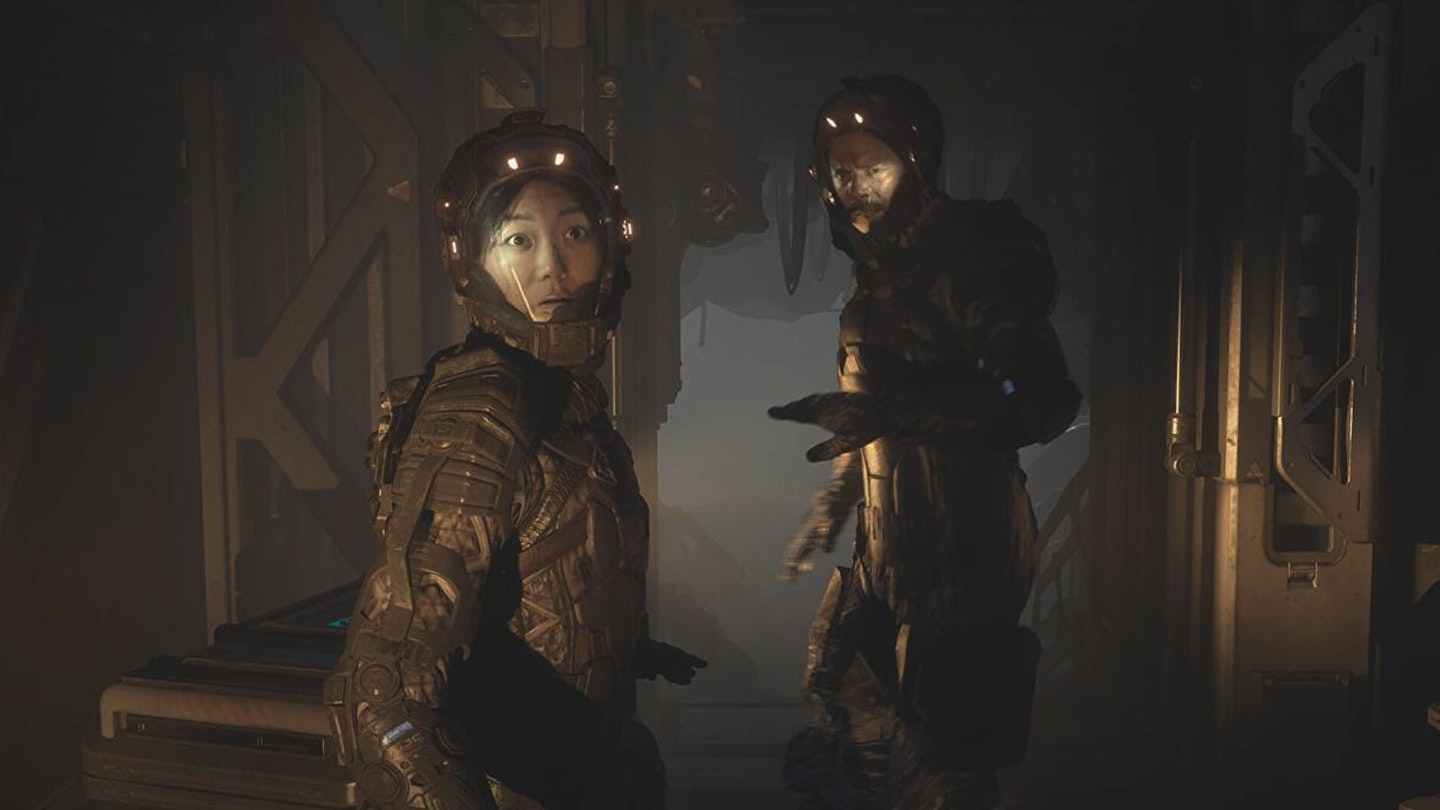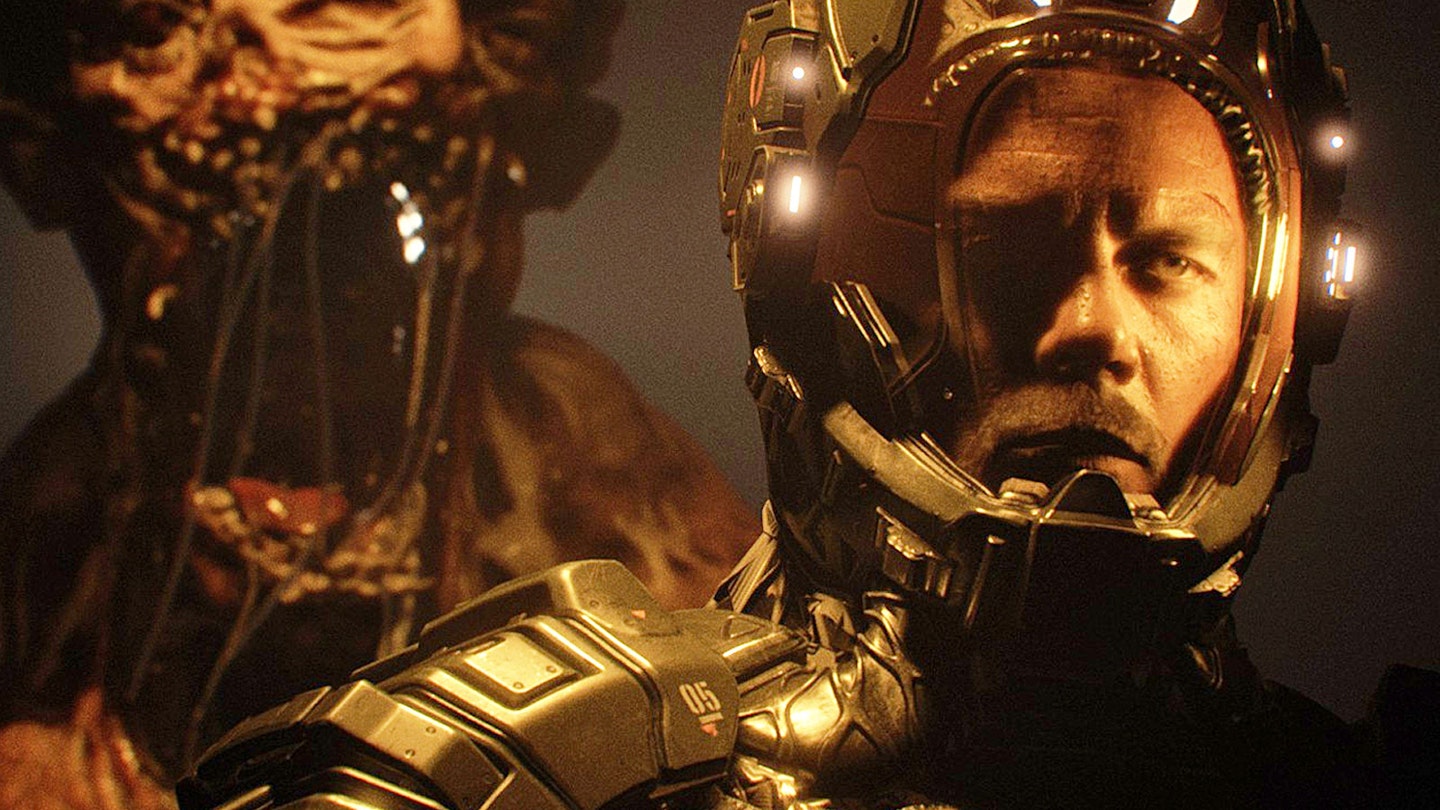Platforms: PS5, PS4, Xbox Series X, Xbox One, PC
There's no getting away from the fact that The Callisto Protocol is a Dead Space game in all but name. Whether it's the general survival horror trappings, the enemies that can be dispatched by lopping off limbs or tentacles, or even the heavy industrial aesthetic, it's easy to think you're once again running around the USG Ishimura.
Of course, it's not actually Dead Space, and it's not the Ishimura – it's Black Iron Prison, an outpost for the worst of the worst, located on the titular moon of Jupiter. Unfortunately for protagonist Jacob Lee, he's not only been wrongfully imprisoned there, but he's been locked up right as his fellow inmates start mutating into horrifying, bloodthirsty monsters, leaving him to battle his way out of a collapsing facility with initially little more than a shiv to his name.

Yet while Lee's jailbreak is the main thrust of the plot – with diversions into uncovering what's gone wrong at Black Iron, and a wider narrative involving a 'terrorist' group called the Outer Way and its leader Dani Nakamura – The Callisto Protocol never quite escapes its own Dead Space trappings. It's not just the familiar mechanics, with the signature ability to target specific enemy appendages once you lay your hands on projectile weaponry, or needing to stomp the last vestiges of un-life out of monsters once they're down to ensure they don't get back up (and squish the odd item out of their remains, to boot). It's the whole design sensibility, with Jacob's health permanently displayed on a gauge on the back of his neck, or simple holographic HUDs floating in easy player view. It's also the linear progression, that rarely rewards players for exploring beyond the path developer Striking Distance Studios has laid out. Perhaps it's no surprise, given that director Glen Schofield co-created both games, but the similarities are so over-abundant that it often feels like a horror twist on the gag in Austin Powers In Goldmember, where a rampaging kaiju is pointed out to be very close to, but legally distinct from, Godzilla.
The Callisto Protocol is from the jump scares school of terror, but it's a paragon of the form, mastering the art of building the tension leading up to them.
However, if you're going to imitate, there are worse games to crib notes from than Dead Space, and The Callisto Protocol does throw in some tweaks to the formula. For one, the combat is more melee focused, with a simple yet effective mix of dodges and blocks using the L stick that force players to learn to read enemy attack animations. Jacob also feels less immediately vulnerable than his spiritual predecessor, Isaac Clarke – while even a single malformed infectee can take him down if you're not careful, treating the player to one of several distressingly gory death scenes, his blows with initial weapon the giant wrench feel satisfyingly meaty as they land. He's a bit clunkier to control than we'd like, not helped by the (again, Dead Space-like) over-the-shoulder camera view that has him always feeling like he's moving at a slight diagonal.

There's a better power creep through the game than Dead Space, too. Weapons like the stun baton, which keep the emphasis on melee encounters but add a bit of oomph to Jacob's strikes, are joined by a solid arsenal of firearms and – inevitably, given the game's roots – telekinetic powers that allow you to fling enemies around (most usefully, into live machinery). The Callisto Protocol never has you feeling like an unstoppable tank, and the infected inmates of Black Iron are always a threat, but progression is rewarded with enough of a boost to abilities that you feel like you stand a decent chance of surviving.
Plus, as a horror game, it's genuinely scary. The Callisto Protocol is from the jump scares school of terror, but it's a paragon of the form, mastering the art of building the tension leading up to them. Flickering lighting and audio tricks, along with a brilliantly nerve-shredding score, play on the mind to magnificent effect, so even when you _know_something is about to leap out at you, it's still shriek-inducing when it happens. Even more effectively, sometimes a fright will be lampshaded then not happen, leaving you on edge for entire sections of the game.
For the studio's first game, The Callisto Protocol is also of phenomenally high quality. Character models and environments are stunningly realised – the linearity of the game likely helps here, allowing Striking Distance to polish precisely what they want players to see – and it makes fantastic use of hardware features on PS5 (version tested) to push out comms chatter to the DualSense controller's speaker for a more immersive experience. Its cast – including Josh Duhamel as Jacob, Karen Fukuhara as Dani, and Sam Witwer as Black Iron's security chief Leon Ferris – elevate the whole affair with strong performances throughout, too.
While we can't award The Callisto Protocol any points for originality, that doesn't detract from it still being an excellent, well-executed horror game. A bit more freedom to explore Black Iron wouldn't have gone amiss, but the laser focus on taking players through its story also means it doesn't get repetitive or outstay its welcome. If this was the first time players were seeing any of this, they'd be blown away. As it is, they'll still be impressed, even if they won't be able to stop thinking of that other game that it's in (sorry) striking distance of.
